
|

|
accessible info : Metro
/ JR / Tokyu
/ Odakyu
/ Keio /
Keikyu / Keisei
/ Seibu
/ Tobu
/ Bay
area
/ hotel
|

Area
Information
|
 |
|
Akihabara |
   |
 |
|
The world famous Electric Town. This district is a subculture hotspot for manga comics, games, otaku(geek) goods and maid cafes. Most big stores are wheelchair accessible while many small stores in old small buildings have no lift.
Maid cafes are generally tiny and very few of them have lift access. JR Akihabara Station is wheelchair accessible.
http://www.akiba.or.jp/english |
|
 |
|
Asakusa |
   |

|
|
One of the most famous tourist spot in Tokyo. Asakusa shopping arcade is popular. Although this street is flat, the shopping arcade is so crowded on weekends that wheelchair users may find it difficult to walk around in the street.
Sensoji
Temple, which is well-known for the front gate called Kaminarimon, is wheelchair accessible. There is a lift on the left side of the main temple.
on |
|
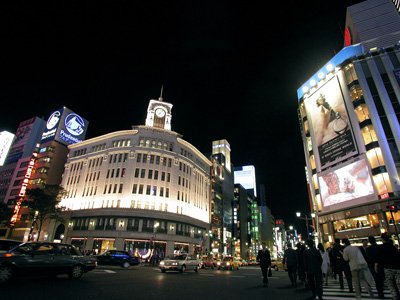 |
|
Ginza |
   |

|
|
The most famous upmarket shopping, dining and entertainment district in Japan. Sidewalks in the area are very smooth. Department stores are fully wheelchair accessible. Excellent service is provided at many high-grade restaurants, bars, stores and night clubs. The nearest station is JR
Yurakucho Station, which is wheelchair accessible. Sunday is the
best to visit because of no car on main street. |
|
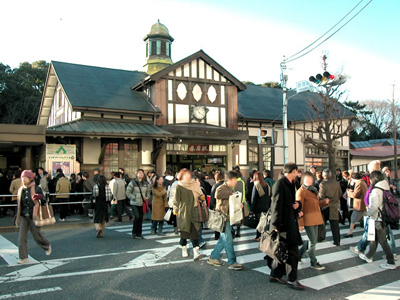 |
|
Harajuku |
   |
 |
|
Hot spot of young fashion and culture. Omotesando Street is a high-class fashion avenue. This street is so hilly that wheelchair users may find it difficult to go up and down the street. Meiji Jingu
, one of the most famous shrine in Japan, is located in Harajuku. This shrine is next to Yoyogi Park and near to Harajuku Station. |
|
 |
|
Ikebukuro
|
   |
 |
|
One
of the terminal stations. 2 JR, Seibu, Tobu, and 3 Subway lines
are connected to Ikebukuro station. Little Chinatown is in the west side
of the station. Big shopping area and important traffic
point. Not so many tourist spots around it. Enjoy shopping and
eating. |
|
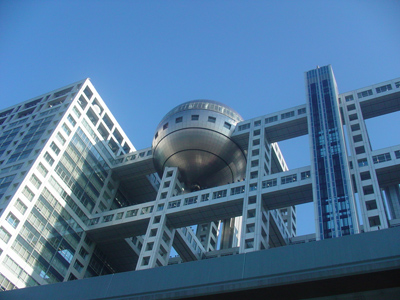 |
|
Odaiba |
   |
 |
|
A large artificial island in Tokyo Bay. There are many
shopping
malls, sightseeing spots, entertainment attractions, museums, hotels and parks. Fuji TV Building is a landmark of Odaiba. Tokyo Big Site Convention Center is also located in this area. All the museums are completely wheelchair accessible.
Oedo Onsen Monogatari (Hot Springs Theme Park) is also wheelchair accessible. Wheelchair users have easy access to Odaiba by Metro.
HCR
(International Home Care & Rehabilitation Exhibition) is held in
every autumn at Tokyo Big Sight in Odaiba area. |
|
 |
|
Roppongi |
   |
 |
|
A popular nightlife district, especially for foreign
residents. There are many bars and nightclubs. The district is so crowded at night that wheelchair users sometimes find it difficult to move around in the streets.
Roppongi Hills and
Tokyo
Midtown, which are two huge shopping & business complexes, are wheelchair friendly.
So many wheelchair users enjoy shopping and eating at nice restaurants in the buildings. Metro stations are wheelchair accessible. But those stations are not connected.
So when wheelchair users change trains, they have to make a long detour or move along the hilly streets to
reach another station. |
|
 |
|
Shibuya |
   |
 |
|
A most popular shopping and entertainment district for young people. This area is a center for youth fashion and culture. Countless neon lights illuminate the city of Shibuya at night. You will feel hustle and bustle of the city. Some streets in the center of the shopping area, the northwest part of Shibuya, are so hilly that people in manual wheelchairs may find it difficult to move along the streets. Shibuya Station is also an important terminal station. |
|
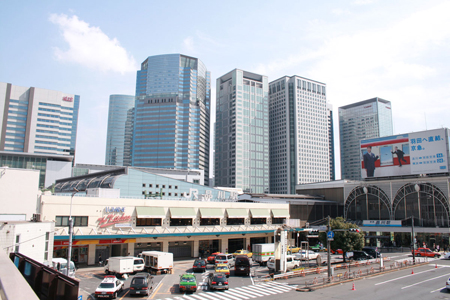 |
|
Shinagawa
|
   |
 |
|
Shinagawa
station is a huge railway hub terminal. Shinkansen bullet train
stop here. Keikyu line goes to Haneda airport. Many office
buildings. Many hotels around Shinagawa area. Not many tourist
spots. Both JR and Keikyu stations are totaly wheelchair
accessible.
|
|
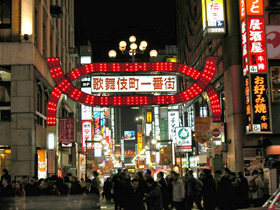 |
|
Shinjuku
|
   |
 |
|
Many railway lines go to
Shinjuku. Besides, Shinjuku Station is the world's busiest railway station. The railway network is so complicated that you should be careful not to lose your way. Shinjuku is also a major stop for long-distance highway buses. Most of buildings and department stores have good wheelchair accessibility. Shinjuku Gyoen National Garden, a famous large park with beautiful gardens, is wheelchair accessible. Tokyo Metropolitan Government Building
is also wheelchair accessible. Visitors enjoy the landscape from the 45th floor
without charge.
http://www.shinjukuku-kankou.jp/english/
|
|
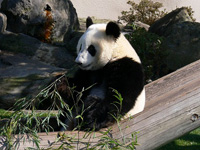 |
|
Ueno
|
   |
 |
|
Ueno Zoo and many
museums in Ueno park. One of the museums is the Tokyo National Museum. This park is also a very famous spot for cherry blossom viewing. The park, the zoo and all the museums have good wheelchair accessibility. Ameyoko Market located between JR Ueno Station and Okachimachi Station is a well-known market street for the lively atmosphere of old Tokyo. JR Ueno Station is a big station, which is fully wheelchair accessible. |
|

Tokyo Sightseeing Spot
|
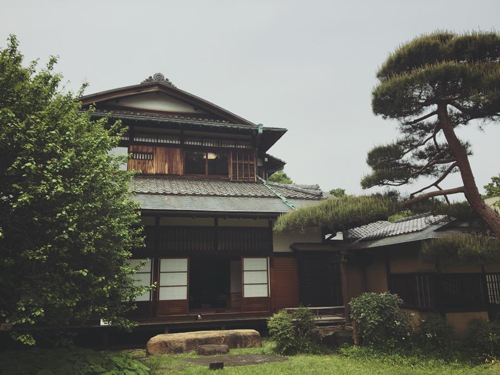 |
Architectural
museum |
   |

|
Edo-Tokyo
Open Air Architectural Museum is located west of Tokyo. Many
relocating Japanese old houses and buildings in the big park.
Wheelchair users may not enter some folklore houses, however they
can enjoy atmosphere and walking around. There are ramps, flat
road, wheelchair toilets in many places. Car is easy access than
train and bus.
http://tatemonoen.jp/english |
|
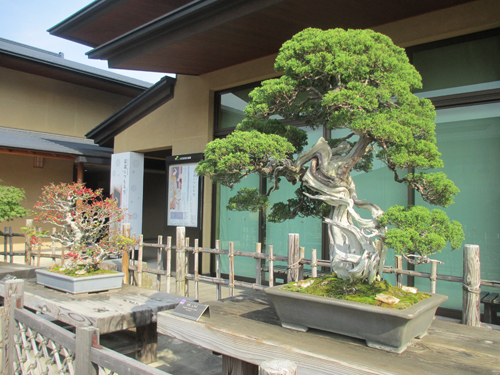 |
Bonsai
museum |
   |

|
Japanese
art on pot. Unique museum located in Saitama Omiya (north Tokyo,
40min by JR train from Shinjuku). Omiya is famous as Bonsai
village gardens. This wheelchair friendly museum operated by city
and opened in 2010.
http://www.bonsai-art-museum.jp/en/
|
|
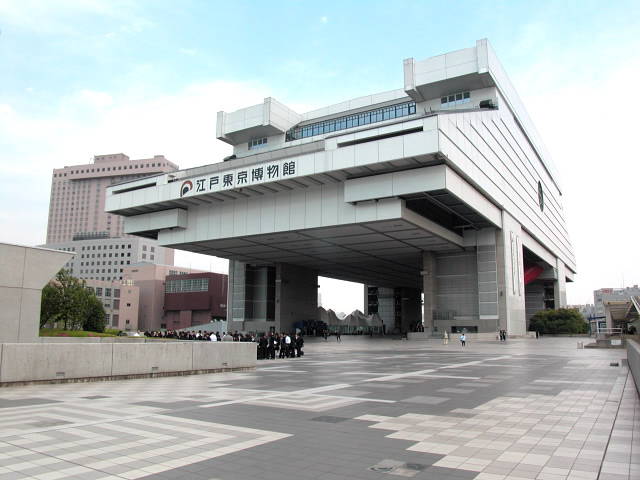 |
Edo
Tokyo museum |
   |

|
A
museum of Tokyo’s culture and history from the Edo period to
today. Completely wheelchair accessible and it offers free
wheelchair rental service. Ryogoku Kokugikan Sumo Hall is next to
the museum. So we can see many big sumo wrestlers around the hall
during sumo tournaments. JR Ryogoku Station and Metro Ryogoku
Station is fully wheelchair accessible.
http://www.edo-tokyo-museum.or.jp/en/ |
|
 |
Ghibli Museum |
   |

|
Japanese
anime studio "Ghibli" museum.
Most parts are wheelchair accessible, but there is no lift to the roof garden. Low-floor buses run between JR Mitaka Station and the museum.
We are
required to purchase reservation tickets (admission tickets) in advance only at LAWSON convenience stores in Japan.
http://www.ghibli-museum.jp/en/ |
|
 |
Imperial Palace |
   |
 |
| The Imperial Palace gardens have many gravel and dirt paths, but some of them were paved for wheelchairs with the original landscape intact. There is a wheelchair ramp at the entrance of the old wooden gate. It takes about 1 hour to walk around the palace gardens. The area is partly wheelchair accessible like other castles and shrines. Easy access from JR Tokyo Station (15min walk). The Palace offers free rental service of wheelchairs
with fat tires designed to move around the gravel and dirt paths,
but it only be pushed.
http://sankan.kunaicho.go.jp/english
|
|
 |
Japanese
garden |
   |

|
There
are many Japanese gardens in Tokyo central. We recommend "
Rikugien " for wheelchiar users because of many wheelchair
routes. Easy access by JR Yamanote line and Metro Nanboku line.
Located in front of wheelchair accessible Komagomi Station.
Rikugien
brochure PDF file
|
|
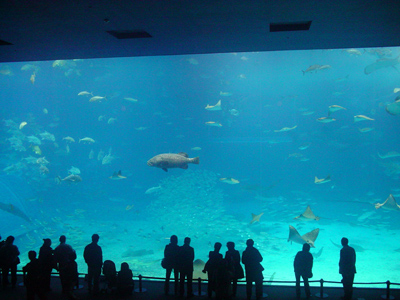 |
Kasai Rinkai Park |
   |

|
The
huge
park along the Tokyo Bay has Kasai Rinkai Aquarium. It is also
called " Tokyo Sea Life Park ". All wheelchair accessible.
JR Kasai-Rinkai-Koen is also fully wheelchair accessible. Wheelchair
users do not share the same route as other visitors in some area, but
they can see all the exhibitions in aquarium.
http://www.tokyo-park.or.jp/english/park/detail_02.html#kasairinkai
|
|
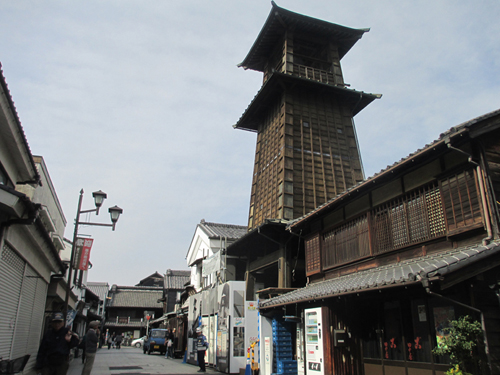 |
Kawagoe |
   |

|
40km
northwest from Tokyo central. Famous for 200 years ago old street.
It is called Little Edo. We can go back to ancient Edo era
(1603-1868). It seems good day trip from Tokyo. Many cars, buses
and trucks run on streets. Narrow side walks. That is a big
problem for tourists specially wheelchair users.
http://www.koedo.or.jp/
|
|
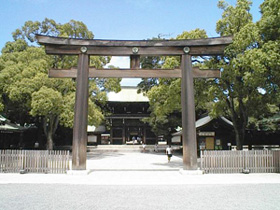 |
Meiji shrine |
   |

|
Most
famous
shrine in metropolitan Tokyo. On new year day (1st January), millions
of people come to pray for their health and good fortune.
Basically the path is not paved (gravel
or dirt) because the shrine preserve the sacred place. However
some part of road is paved today for wheelchairs, baby stroller
and elderly. Wheelchair accessible good example tourist
destination.
http://www.meijijingu.or.jp/english/
|
|
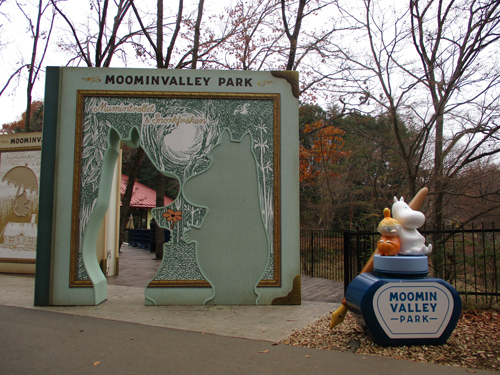 |
Moomin
valley park |
   |

|
90
min drive from Shinjuku. located in Hanno, Saitama. Nature park
opened in 2018. Finland animation Moomin is popular in Japan. Not
many attraction but fun to escape from Tokyo metropolitan. Mostly
wheelchair accessible. You need a car to visit here.
https://metsa-hanno.com/en/
|
|
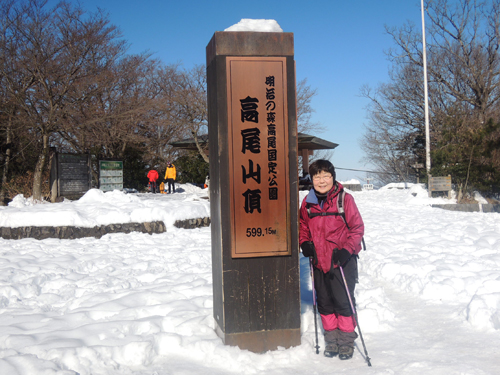 |
Mt
Takao |
   |
|
|
Small mountain located
west of Tokyo. 50 minutes by Keio railway line from Shinjuku. Mountain
train runs to middle of mountain. Keio line and Takao mountain
train are wheelchair accessible. Some road are very hilly,
wheelchair users need someone's help, but it is possible to reach
the top of mountain on wheelchair. Escape Tokyo metropolitan and
feel nature in mountain.
http://takaozanyuho.com/
|
|
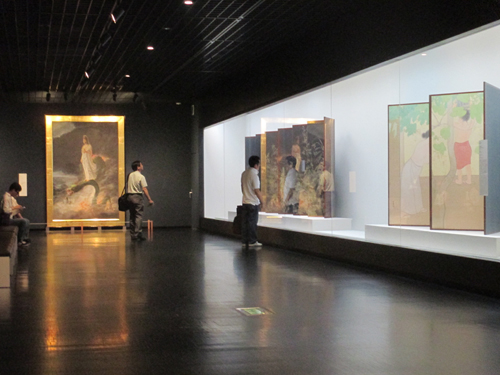 |
Museum
of Modern Art |
   |

|
National
Museum of Modern Art is located in Imperial Palace. Visit after
walking in the eastern garden of Imperial Palace. The north gate
is nearby. Enjoy the view of Imperial Palace from the museum. All
museums in Japan are very wheelchair friendly.
http://www.momat.go.jp/ |
|
 |
Narita
Shinshoji |
   |

|
| This temple is located near Tokyo Narita airport. Very famous specially for praying for traffic safety. If you stay at a hotel near Narita Airport, visiting
is a good option. Great Main Hall of the temple has a lift for wheelchair users and elderly persons.
We can offer
lift taxi service and arrange a tour around Narita Airport. You can also visit a Japanese folk park, a soy sauce factory and a sake brewery in Narita area.
http://www.naritasan.or.jp/english/index.html |
|
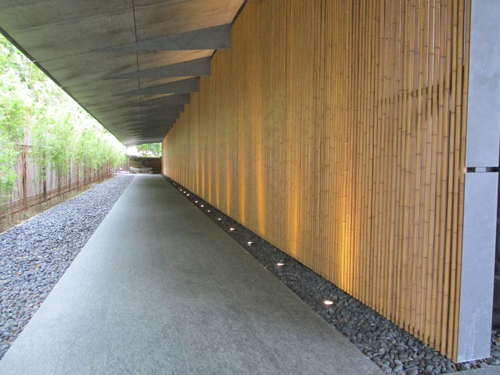 |
Nezu
museum |
   |

|
Calm
small oriental museum in central Tokyo, Aoyama area. The Japanese
garden is outstanding and wheelchair accessible. Many high end
shops in this area. Nice to walk from Harajuku Omotesando. If you
are interested in tea culture, oriental art and Japanese garden,
do not miss it.
http://www.nezu-muse.or.jp/en/ |
|
 |
Sanrio
Puroland |
   |

|
Hello
Kitty inndoor amusement park for specially kids. Located in Tama
area, 30 minutes from Shinjuku by Keio line. There are 3 railway
stations (Keio, Odakyu, Tama mono rail) which are full wheelchair
accessible. Wheelchair users cannot access some areas in Sanrio
Puroland, but they enjoy shows and many attractions.
http://en.puroland.jp/ |
|
 |
Skytree |
   |

|
634m
high Tokyo Skytree and shopping area Solamachi were opened in 2012. This
tower has two observation decks (450m, 350m). Both are completely wheelchair
accessible. Wheelchair users do not have to wait in a queue.
Priority entrance.
http://www.tokyo-skytree.jp/
|
|
 |
Tokyo
Tower |
   |

|
Tokyo tower
is 333m high, with red color, opened in1958 is not fully
wheelchair accessible. The 1st observation
deck (145m high) is OK, but
many stairs and escalators to the special observation
deck (250m high). Japanese anime One Piece park open inside the
tower. Nice to visit sunset time.
http://www.tokyotower.co.jp
|
|
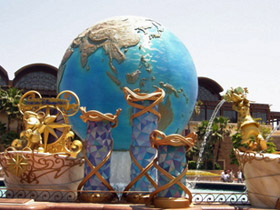 |
Tokyo
Disney Resort |
   |

|
| Tokyo
Disney Land and Tokyo Disney Sea are surely wheelchair friendly. Persons with disabilities may not be able to ride some attractions by their strict regulations.
But mostly no problem. We can enjoy Disney fantasy
world. The nearest railway station is JR Maihama, which is perfectly wheelchair accessible. Many hotels
around Tokyo Disney Resort have wheelchair accessible rooms.
http://www.tokyodisneyresort.co.jp/en/ |
|
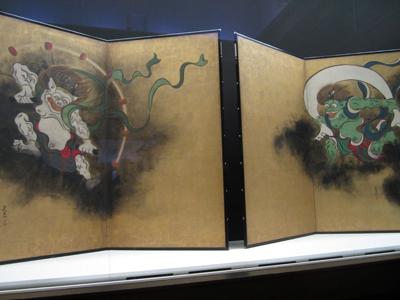 |
Tokyo
National Museum |
   |

|
| Located
near JR Ueno Station. There are 4 other museums and a zoo in Ueno
park. Good to visit on rainy days. Even sunny day, we enjoy nice
holiday in this cultural big park. You can see typical Japanese
traditional arts. Of course accessibility is very good . Ueno
park is the most famous place for cherry blossom. http://www.tnm.jp |
|
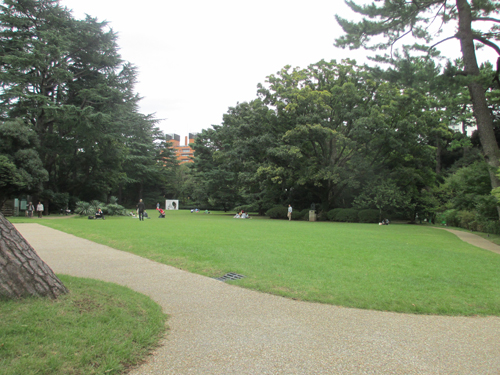 |
Teien
Art Museum |
   |

|
| Quiet
nice green oasis in metropolitan Tokyo central. Antique western
style house with nice garden. Located near JR Meguro Station.
Only stairs to 2nd floor of main building. Nice cafe in new
building. Good place for rest. http://www.teien-art-museum.ne.jp/ |
|
 |
Tsukiji
Fish Market |
   |

|
| Located
near Ginza. The world famous fish market, especially for bluefin tuna.
The market is not opened to public, but there are so many sushi
restaurants and open markets for tourists. Many buyers and tourists.
Flat floor. Narrow paths. People using wheelchair or canes have to
be careful in walking. It is not safe. Many sushi restaurants are small and
tiny. But sushi are very tastey because of fresh.
http://www.tsukiji-market.or.jp/ |
|
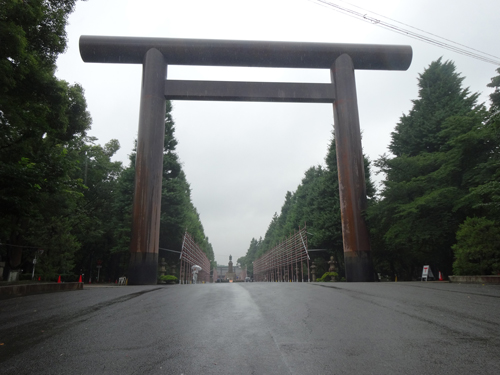 |
Yasukuni
Shrine |
   |

|
The
shrine to millions of
the war dead who made the modern Japanese
nation. The Chinese and Korean governments blame Japanese
prime ministers for their visits. A diplomatically controvesial
place over responsibilities of World War Second. There is the museum
built from the nationalism point of view. The shrine and museum are both wheelchair accessible.
http://www.yasukuni.or.jp/english/
|


|
|



![]()